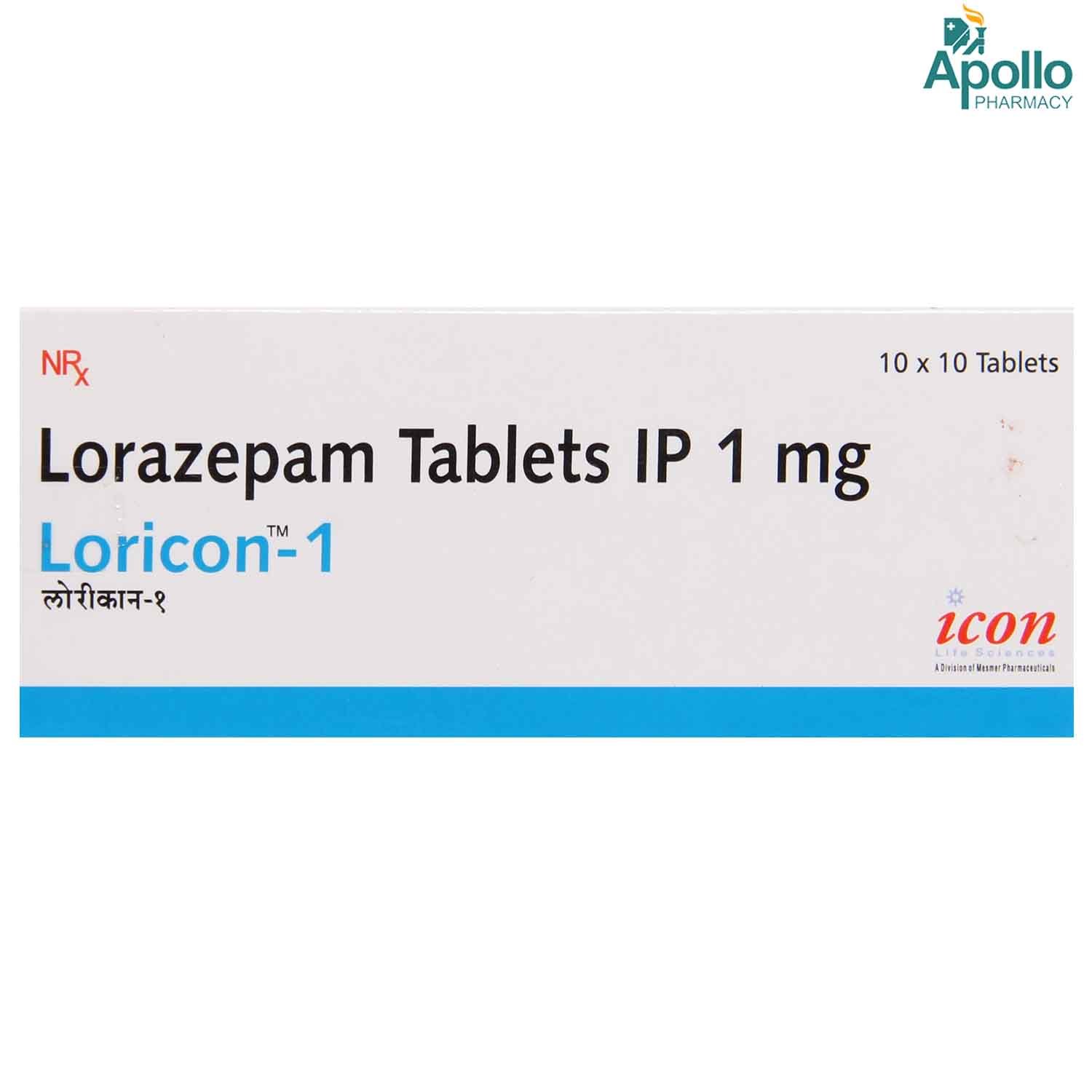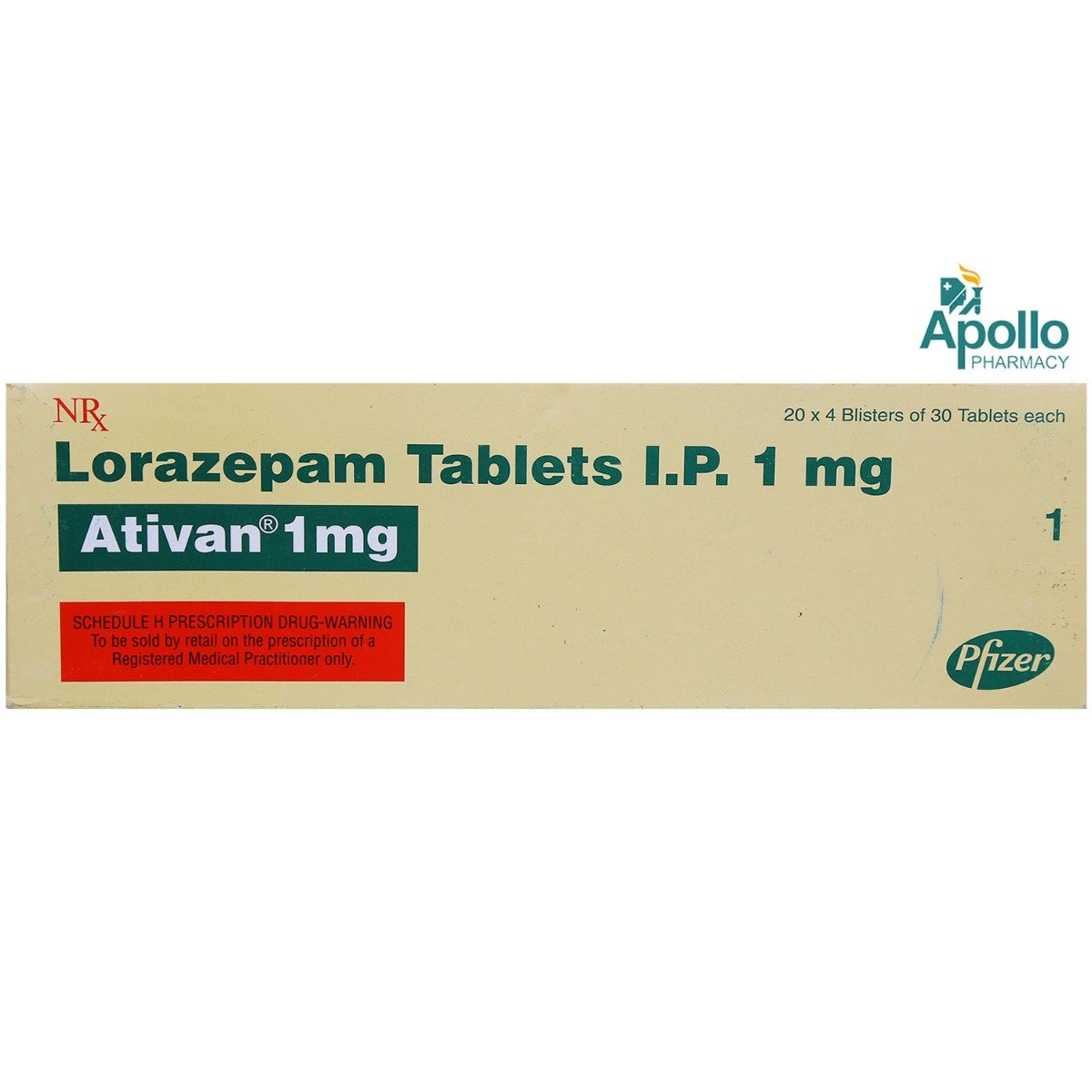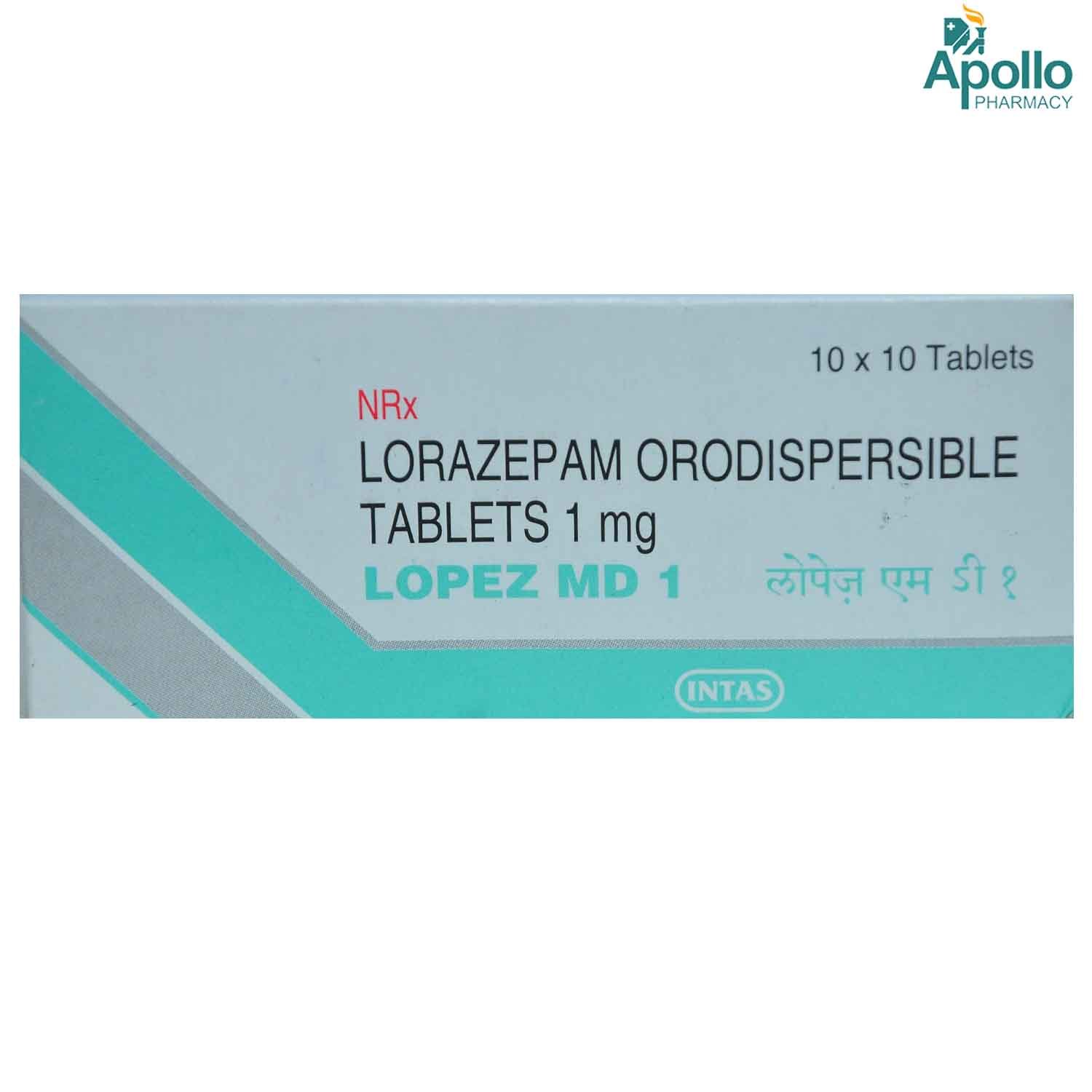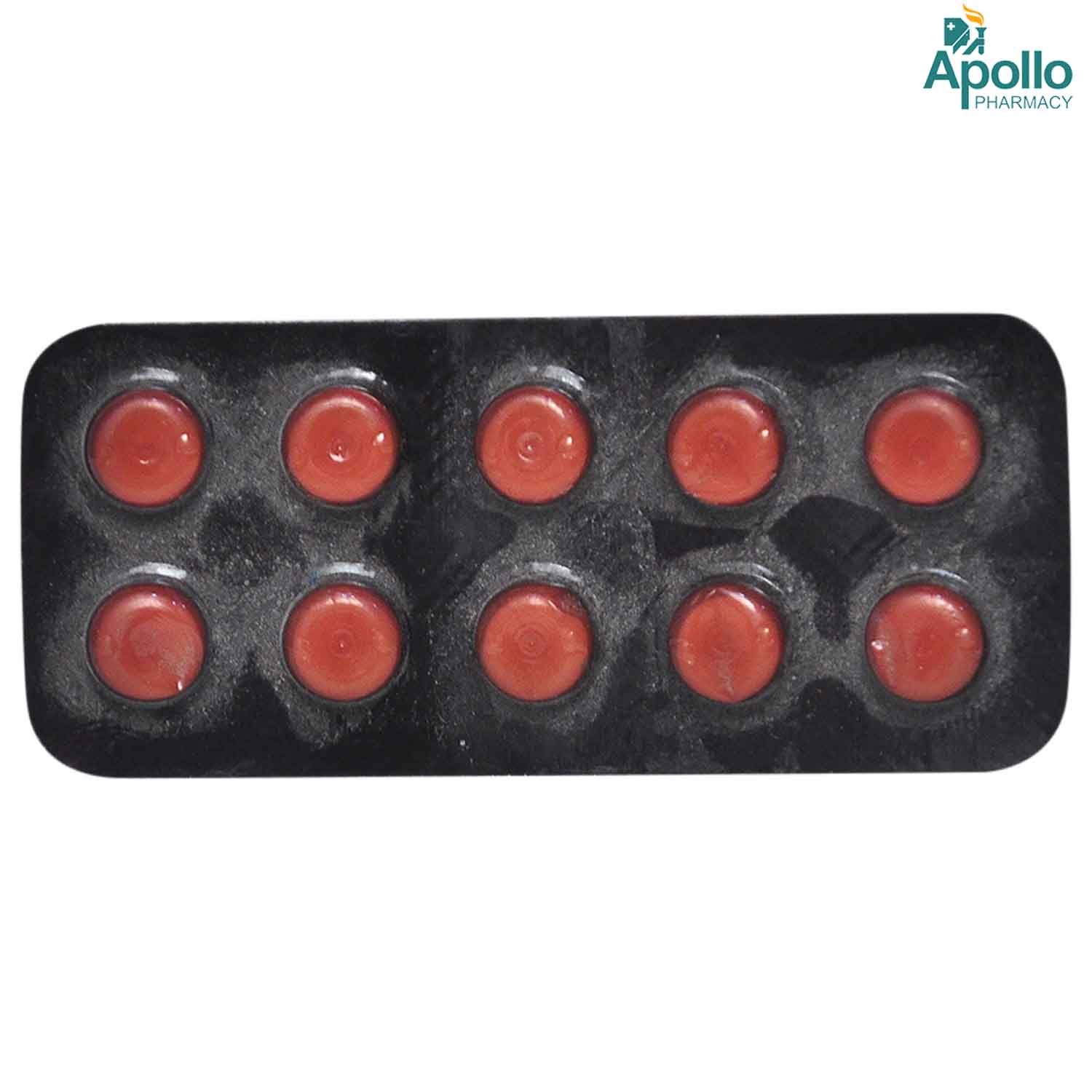TRAPEX 1MG TABLET

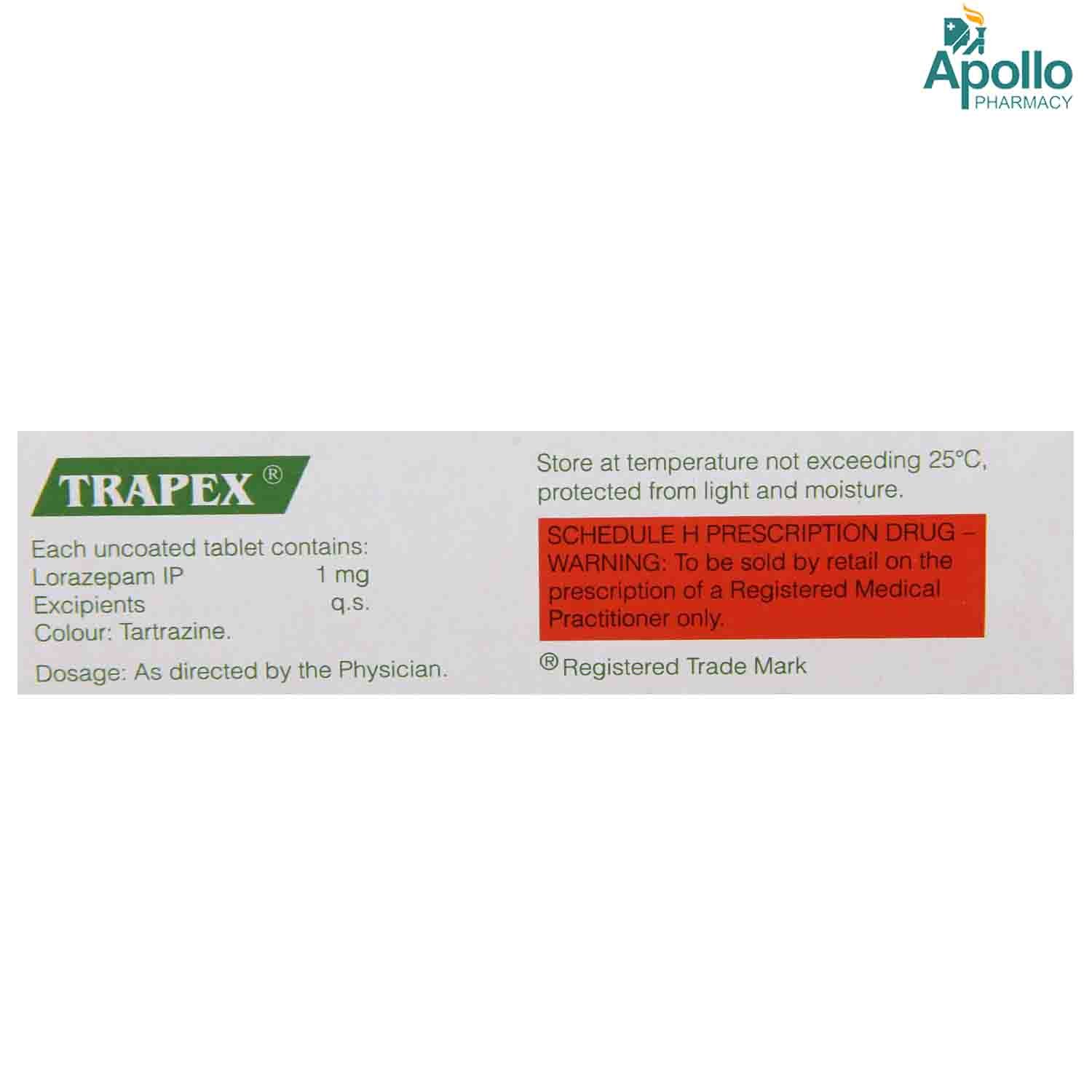
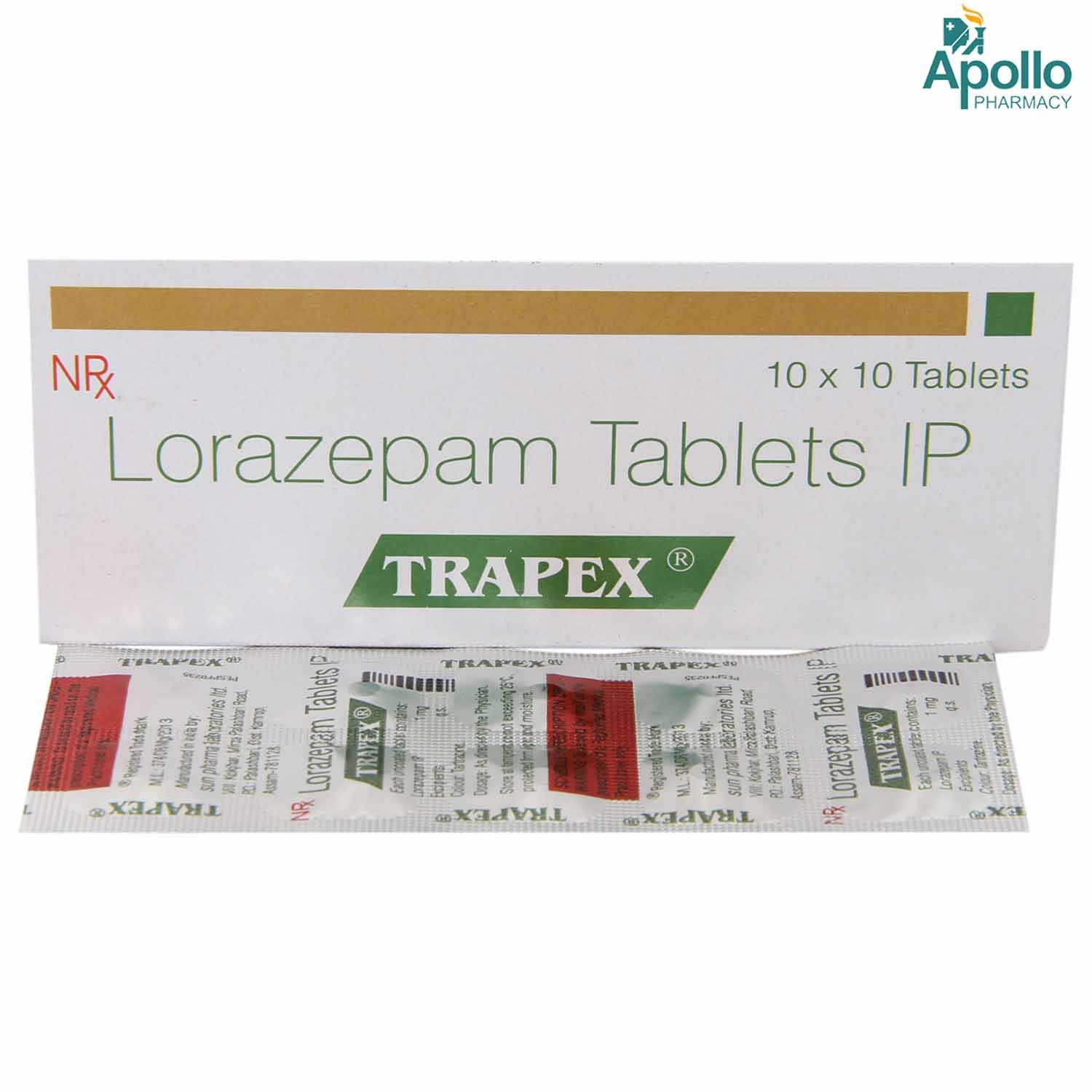
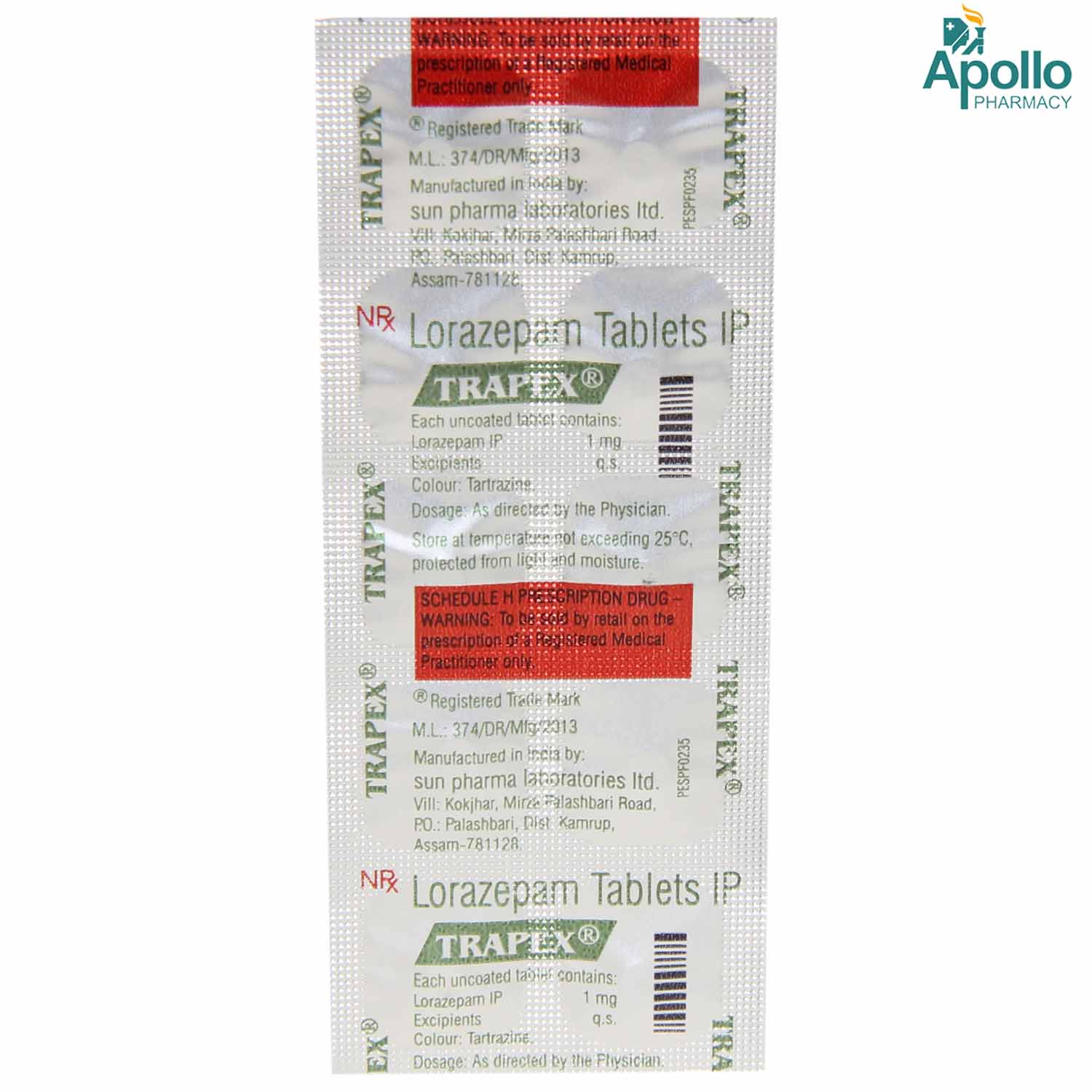

MRP ₹24
(Inclusive of all Taxes)
₹3.6 Cashback (15%)
know your delivery time
Provide Delivery Location
Composition :
Manufacturer/Marketer :
Consume Type :
Expires on or after :
Return Policy :
NPPA :

Secure Payment

Trusted by 8 Crore Indians

Genuine Products
Therapeutic Class
Country of origin
Manufacturer/Marketer address
Author Details
We provide you with authentic, trustworthy and relevant information
Disclaimer
Alcohol
Safe if prescribed
Avoid taking TRAPEX 1MG TABLET with alcohol as it can increase the side effects of this medicine like dizziness, drowsiness and difficulty in concentrating.
Pregnancy
Consult your doctor
TRAPEX 1MG TABLET is considered unsafe for pregnant women. TRAPEX 1MG TABLET may cause harmful effects on the baby (foetus), so your doctor will weigh the benefits and potential risks before prescribing it.
Breast Feeding
Consult your doctor
TRAPEX 1MG TABLET passes into the breast milk and may harm the baby. Avoid breastfeeding while taking TRAPEX 1MG TABLET.
Driving
Safe if prescribed
TRAPEX 1MG TABLET may cause sleepiness, dizziness, and drowsiness. So, it is not recommended to drive or operate machinery after taking TRAPEX 1MG TABLET.
Liver
Consult your doctor
TRAPEX 1MG TABLET to be taken with caution, especially if you have a history of liver disease. The dose may have to be adjusted by your doctor.
Kidney
Consult your doctor
TRAPEX 1MG TABLET to be taken with caution, especially if you have a history of kidney disease. The dose may have to be adjusted by your doctor.
Children
Safe if prescribed
The safety and effectiveness of TRAPEX 1MG TABLET in children have not been established.
Product Substitutes
About TRAPEX 1MG TABLET
TRAPEX 1MG TABLET belongs to a group of medications called benzodiazepines primarily used to treat epilepsy (status epilepticus) and anxiety disorder. TRAPEX 1MG TABLET may be prescribed as short-term therapy for sleeping difficulties due to anxiety. It may also be used as a sedative prior to surgery. An anxiety disorder is a mental health disorder characterised by feelings of excessive fear or worry that affect an individual's daily activities. Epilepsy is a chronic disorder characterised by episodes of seizures (fits).
TRAPEX 1MG TABLET contains lorazepam, which works by increasing levels of the calming chemical mediator known as gamma-aminobutyric acid (GABA) in the brain, this helps relieve anxiety, stops seizures attacks (fits) and relaxes the tense muscles.
Take TRAPEX 1MG TABLET exactly as prescribed. The common side-effects of TRAPEX 1MG TABLET are sleepiness, tiredness, muscle weakness and problems with co-ordination. Most of these side effects of TRAPEX 1MG TABLET do not require medical attention and gradually resolve over time. However, if the side effects are persistent, reach out to your doctor.
Do not take TRAPEX 1MG TABLET if you are allergic to any of its components. Inform your doctor if you have lung disease, muscle weakness (myasthenia gravis), sleeping disorder, severe liver disease, problems with alcohol or other recreational drugs. TRAPEX 1MG TABLET is a habit-forming drug, and hence there is a risk of dependence on this medicine. Before stopping this medicine, contact a doctor as it may cause withdrawal symptoms like anxiety, increased heart rate, tremors or general unwell feeling.
Uses of TRAPEX 1MG TABLET
Medicinal Benefits Mweb
Key Benefits
TRAPEX 1MG TABLET belongs to a group of medications called benzodiazepine primarily used to treat epilepsy (fits) and anxiety disorder. TRAPEX 1MG TABLET contains lorazepam, which works by increasing levels of the chemical mediator that calms brain cells (neurons), known as gamma-aminobutyric acid (GABA), this helps relieve anxiety, stops seizures attacks (fits) and relaxes tense muscles. Additionally, TRAPEX 1MG TABLET may be prescribed as short-term therapy for sleeping difficulties due to anxiety. It may also be used as a sedative prior to surgery.
Directions for Use
Side Effects of TRAPEX 1MG TABLET
- Sleepiness
- Tiredness
- Muscle weakness
- Problems with co-ordination
Drug Warnings
Inform your doctor if you have had severe breathing problems, are allergic to lorazepam or other related benzodiazepines, have muscle weakness (myasthenia gravis), serious liver problems, breathing problems, or glaucoma (high blood pressure in eyes), are breastfeeding, pregnant or planning for pregnancy. Avoid using TRAPEX 1MG TABLET with opioid medicines as it can cause severe drowsiness, breathing problems, coma, and death. TRAPEX 1MG TABLET should be taken with extreme caution in patients with a history of alcohol or drug abuse. If you feel suicidal thoughts, difficulty in concentration, sleep disturbances, dizziness, or sleepiness, let your doctor know about this.
Drug-Drug Interactions
Drug-Drug Interactions
Login/Sign Up
Using Trapex 1mg Tablet together with Tapentadol can increase the risk or severity of side effects like decreased breathing rate, irregular heart rhythms, or problems with movement and memory.
How to manage the interaction:
Taking Trapex 1mg Tablet with Tapentadol is generally avoided as it can result in an interaction, it can be taken if your doctor has advised it. However, if you notice any symptoms of dizziness, lightheadedness, severe headache, and weakness, you should contact a doctor immediately. Do not stop using any medications without talking to a doctor.
Using Trapex 1mg Tablet together with Dezocine can cause central nervous system depression (a physiological state that can result in a decreased rate of breathing, decreased heart rate, and loss of consciousness, possibly leading to coma or death).
How to manage the interaction:
Although there is a possible interaction between Trapex 1mg Tablet and Dezocine, you can take these medicines together if prescribed by your doctor. It's important to keep an eye on your health and talk to your doctor about any concerns. If you notice any symptoms like trouble breathing, pain, feeling dizzy or tired, or having trouble focusing, make sure to contact a doctor right away. Do not stop using any medications without a doctor's advice.
Co-administration of flumazenil with Trapex 1mg Tablet can increase the risk of seizures(fits).
How to manage the interaction:
Although there is a possible interaction between Flumazenil and Trapex 1mg Tablet, you can take these medicines together if prescribed by your doctor. Do not stop using any medications without a doctor's advice.
Using Trapex 1mg Tablet together with Remifentanil can cause central nervous system depression (a physiological state that can result in a decreased rate of breathing, decreased heart rate, and loss of consciousness, possibly leading to coma or death).
How to manage the interaction:
Taking Trapex 1mg Tablet with Remifentanil together can result in an interaction, but it can be taken if your doctor has advised it. It's important to keep an eye on your health and talk to a doctor about any concerns. They can recommend different options that won't cause any problems. If you notice any discomfort like pain, feeling dizzy, or having trouble focusing, make sure to reach out to a doctor right away. Do not stop using any medications without talking to a doctor.
Coadministration of Trapex 1mg Tablet with Bumetanide shows additive effects and results in low blood pressure.
How to manage the interaction:
Although taking Trapex 1mg Tablet with Bumetanide together can result in an interaction, it can be taken if your doctor has advised it. However, if you notice headache, dizziness, lightheadedness, fainting, or irregular pulse or heart rate, you should contact a doctor immediately. Do not stop using any medications without talking to a doctor.
Using narcotic pain or cough medications together with other medications that also cause central nervous system depression (a physiological state that can result in a decreased rate of breathing, decreased heart rate, and loss of consciousness).
How to manage the interaction:
There may be a possibility of interaction between Trapex 1mg Tablet and Alfentanil, but it can be taken if prescribed by a doctor. It's important to keep an eye on your health. Your doctor can recommend other options that won't cause any problems. If you notice any of these signs - feeling sad, having trouble breathing, feeling dizzy or sleepy, or finding it hard to focus - make sure to contact a doctor right away. Do not stop using any medications without talking to a doctor.
Co-administration of Trapex 1mg Tablet with Clozapine may show additive effects and increase the risk or severity of side effects.
How to manage the interaction:
Although taking Trapex 1mg Tablet with Clozapine together can result in an interaction, it can be taken if your doctor has advised it. However, if you notice any extreme drowsiness, confusion, shallow breathing, low blood pressure, weak pulse, and incoordination, you should contact a doctor immediately. Do not stop using any medications without talking to a doctor.
Coadministration of Trapex 1mg Tablet with Captopril may show additive effects and result in low blood pressure.
How to manage the interaction:
Although taking Trapex 1mg Tablet with Captopril together can result in an interaction, it can be taken if your doctor has advised it. However, if you notice headache, dizziness, lightheadedness, fainting, or irregular pulse or heart rate, you should contact a doctor immediately. Do not stop using any medications without talking to a doctor.
Using Trapex 1mg Tablet together with Pethidine can cause central nervous system depression (a physiological state that can result in a decreased rate of breathing, decreased heart rate, and loss of consciousness, possibly leading to coma or death).
How to manage the interaction:
Although there is a possible interaction between Pethidine and Trapex 1mg Tablet, you can take these medicines together if prescribed by your doctor. Your doctor can recommend other options that won't cause any problems when taken together. Do not discontinue any medications without consulting a doctor.
Using Trapex 1mg Tablet together with Morphine can increase the risk of central nervous system depression (a physiological state that can result in a decreased rate of breathing, decreased heart rate, and loss of consciousness).
How to manage the interaction:
Co-administration of Morphine with Trapex 1mg Tablet can result in an interaction, but it can be taken if a doctor has advised it. However, if you experience any symptoms like trouble breathing, feeling tired, or having a cough, dizziness, drowsiness, difficulty concentrating, impaired judgment, reaction speed, and motor coordination, make sure to contact a doctor immediately. Do not stop using any medications without consulting a doctor.
Drug-Food Interactions
Drug-Food Interactions
Login/Sign Up
Drug-Diseases Interactions
Drug-Diseases Interactions
Login/Sign Up
Drug-Drug Interactions Checker List
- CARBAMAZEPINE
- FLUVOXAMINE
- PHENOBARBITAL
- PHENYTOIN
- PRIMIDONE
- AMPRENAVIR
- RITONAVIR
- CIMETIDINE
- DISULFIRAM
- RIFAMPICIN
- LEVODOPA
- THEOPHYLLINE
Habit Forming
Special Advise
- Abrupt stoppage of TRAPEX 1MG TABLET can lead to significant withdrawal symptoms. Always discuss this with your doctor before completely stopping its usage.
- To avoid getting addicted to TRAPEX 1MG TABLET, take it only in prescribed quantities and only as directed by your doctor. Do not self-medicate.
Diet & Lifestyle Advise
- Do regular exercise, this can help lower anxiety by releasing endorphins and improving your sleep and self-image.
- You can increase your mindfulness by including yoga, meditation, mindfulness-based cognitive therapy and mindfulness-based stress reduction.
- Drink enough water to stay hydrated.
- Include a diet rich in whole grains, vegetables and fruits.
- Herbs like turmeric, ginger and chamomile contain anti-inflammatory properties. They can reduce inflammation caused due to anxiety disorder.
- Reduce your alcohol, caffeine, added sugar, high salt and high fat intake.
- Try to spend time with your friends and family. Having a strong social network may help lower the risk of anxiety.
All Substitutes & Brand Comparisons
RX
Not for online saleAtineu-1 Tablet 10's
Myk Pharmaceuticals Ltd
₹18
(₹1.62 per unit)
25% CHEAPERRX
Not for online saleLanxtra 1 MD Tablet 10's
Quince Lifesciences Pvt Ltd
₹20.5
(₹1.85 per unit)
14% CHEAPERRX
Out of StockNot for online saleDewyday 1 Tablet
Macway Biotech Pvt Ltd
₹20.6
(₹1.85 per unit)
14% CHEAPER

Have a query?
Buy best C.n.s Drugs products by
Intas Pharmaceuticals Ltd
Sun Pharmaceutical Industries Ltd
Torrent Pharmaceuticals Ltd
Alkem Laboratories Ltd
Abbott India Ltd
Cipla Ltd
Alteus Biogenics Pvt Ltd
Micro Labs Ltd
Lupin Ltd
Ipca Laboratories Ltd
D D Pharmaceuticals Pvt Ltd
Icon Life Sciences
Mankind Pharma Pvt Ltd
Tripada Healthcare Pvt Ltd
Arinna Lifesciences Ltd
Linux Laboratories Pvt Ltd
East West Pharma India Pvt Ltd
La Renon Healthcare Pvt Ltd
Talent India Pvt Ltd
Tas Med India Pvt Ltd
Zydus Healthcare Ltd
Cnx Health Care Pvt Ltd
Eris Life Sciences Ltd
Leeford Healthcare Ltd
Emcure Pharmaceuticals Ltd
Macleods Pharmaceuticals Ltd
Sigmund Promedica
Aristo Pharmaceuticals Pvt Ltd
Dr Reddy's Laboratories Ltd
Troikaa Pharmaceuticals Ltd
Consern Pharma Ltd
Zydus Cadila
Shine Pharmaceuticals Ltd
Wockhardt Ltd
Ardent Life Sciences Pvt Ltd
Crescent Formulations Pvt Ltd
Theo Pharma Pvt Ltd
Reliance Formulation Pvt Ltd
Ikon Pharmaceuticals Pvt Ltd
Propel Healthcare
Neon Laboratories Ltd
Jagsam Pharma
Msn Laboratories Pvt Ltd
Morepen Laboratories Ltd
Pulse Pharmaceuticals
Sanofi India Ltd
Med Manor Organics Pvt Ltd
Hetero Healthcare Pvt Ltd
Novartis India Ltd
Crescent Therapeutics Ltd
Elder Pharmaceuticals Ltd
Solvate Laboratories Pvt Ltd
Akumentis Healthcare Ltd
Mova Pharmaceutical Pvt Ltd
Psyco Remedies Ltd
Tripada Lifecare Pvt Ltd
Ajanta Pharma Ltd
Cyrus Remedies Pvt Ltd
Medishri Healthcare Pvt Ltd
Cadila Healthcare Ltd
Glenmark Pharmaceuticals Ltd
Matteo Health Care Pvt Ltd
Hbc Life Sciences Pvt Ltd
Lyf Healthcare
Matias Healthcare Pvt Ltd
Mesmer Pharmaceuticals
Alembic Pharmaceuticals Ltd
Capital Pharma
Crescent Pharmaceuticals
Medopharm Pvt Ltd
Alniche Life Sciences Pvt Ltd
Kivi Labs Ltd
Talin Remedies Pvt Ltd
USV Pvt Ltd
Quince Lifesciences Pvt Ltd
Solis Pharmaceuticals
Infivis Life Care
Zuventus Healthcare Ltd
Cadila Pharmaceuticals Ltd
Pfizer Ltd
Wallace Pharmaceuticals Pvt Ltd
A N Pharmacia Laboratories Pvt Ltd
Blue Cross Laboratories Pvt Ltd
Jenburkt Pharmaceuticals Ltd
Lia Life Sciences Pvt Ltd
Mano Pharma
Medley Pharmaceuticals Ltd
Primus Remedies Pvt Ltd
FDC Ltd
Maneesh Pharmaceuticals Ltd
Apex Laboratories Pvt Ltd
Gagnant Healthcare Pvt Ltd
Ozone Pharmaceuticals Ltd
RPG Life Sciences Ltd
Strides Shasun Ltd
Unichem International
GlaxoSmithKline Pharmaceuticals Ltd
Kuresys Labs Pvt Ltd
LA Pharma
Trion Pharma India Llp





